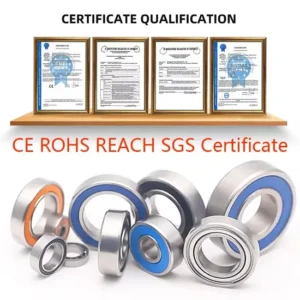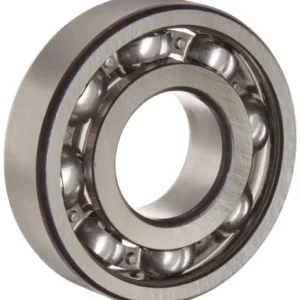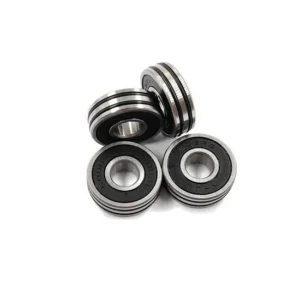This article provides a comprehensive guide on how to make ball bearings, focusing on the manufacturing process for industrial use. It covers various aspects such as product parameters, application scenarios, case studies, and solutions. By understanding the entire process, readers can gain insights into the production of high-quality ball bearings suitable for industrial applications.
Ball bearings are essential components in various industrial applications, providing support and reducing friction between moving parts. This guide aims to provide a detailed understanding of the manufacturing process for ball bearings, covering all aspects from raw materials to the final product. By following this guide, manufacturers can produce high-quality ball bearings that meet the demands of industrial use.
The parameters of ball bearings are crucial in determining their suitability for specific applications. The following table lists some common parameters:
```html
| Parameter | Description |
|---|---|
| Outer Diameter | The diameter of the outer ring of the bearing. |
| Inner Diameter | The diameter of the inner ring of the bearing. |
| Width | The width of the bearing. |
| Load Rating | The maximum load the bearing can support. |
| Speed Rating | The maximum speed the bearing can operate at. |
```
Understanding these parameters helps in selecting the appropriate ball bearing for a specific application.
Ball bearings are widely used in various industrial applications, including:
1. Automotive Industry: Ball bearings are used in engines, transmissions, and suspension systems to reduce friction and ensure smooth operation.
2. Machinery and Equipment: Ball bearings are used in machinery and equipment such as conveyors, pumps, and compressors to provide support and reduce wear.
3. Aerospace Industry: Ball bearings are used in aircraft engines, landing gears, and control systems to ensure precision and reliability.
Here are two real-life examples of ball bearing applications:
1. Case Study 1: A manufacturing company uses ball bearings in their conveyor systems to ensure smooth and efficient material handling. By replacing worn-out bearings with high-quality ones, the company reduced downtime and improved overall productivity.
2. Case Study 2: An automotive manufacturer relies on ball bearings in their engine components. By using high-quality ball bearings, the company ensures longer engine life and reduced maintenance costs.
To produce high-quality ball bearings for industrial use, the following solutions are essential:
1. Raw Material Selection: Choose high-quality raw materials such as steel, brass, and copper to ensure the durability and performance of the ball bearings.
2. Precision Machining: Utilize advanced machining techniques to achieve tight tolerances and ensure the proper fit of the ball bearings.
3. Heat Treatment: Apply appropriate heat treatment processes to enhance the hardness, strength, and fatigue resistance of the ball bearings.
In conclusion, this guide provides a comprehensive overview of the manufacturing process for ball bearings, focusing on product parameters, use scenarios, and solutions. By understanding these aspects, manufacturers can produce high-quality ball bearings suitable for industrial applications. For further information and inquiries, please contact us at info@vivalr.com or call us at (86) 15866781826.
Ball bearings, manufacturing process, industrial use, product parameters, use scenarios, solutions, automotive industry, machinery and equipment, aerospace industry.

显示 1-4 个结果(共 11858 个结果)



